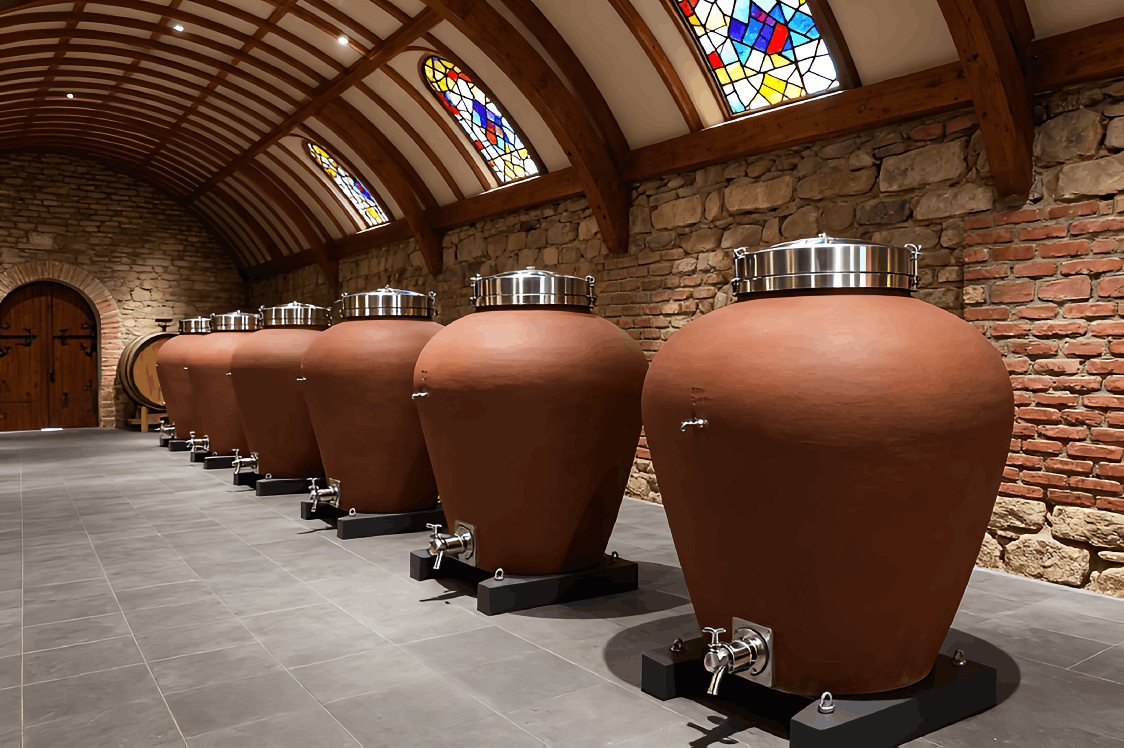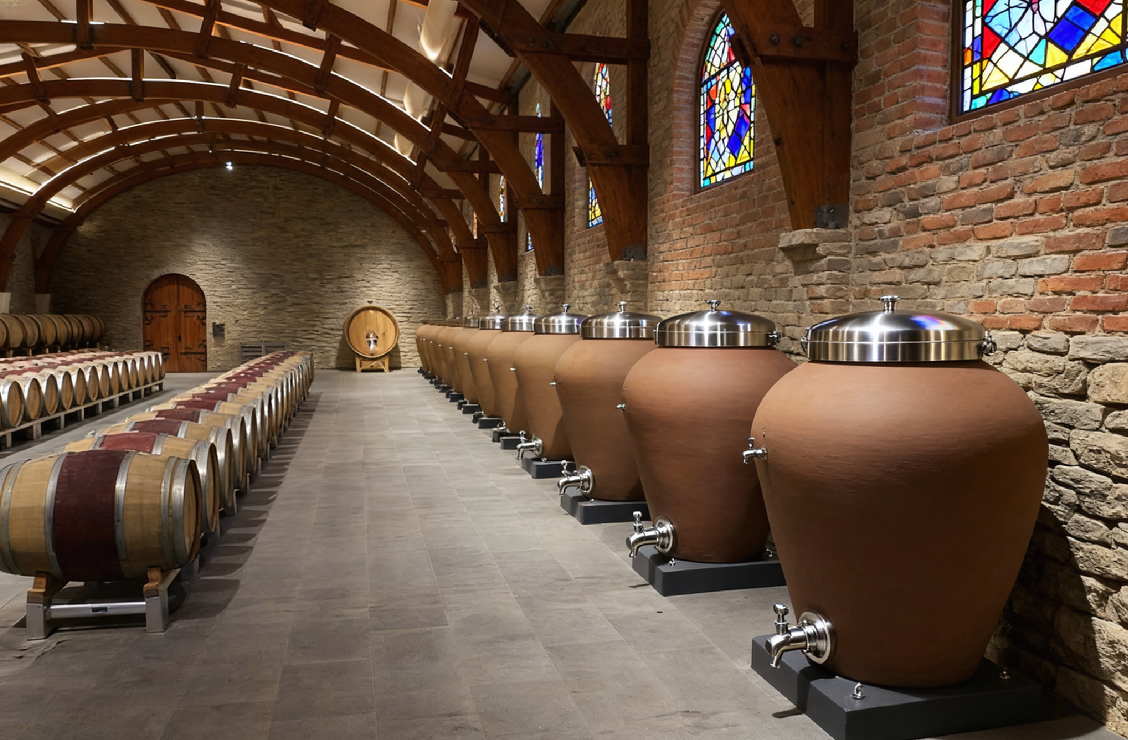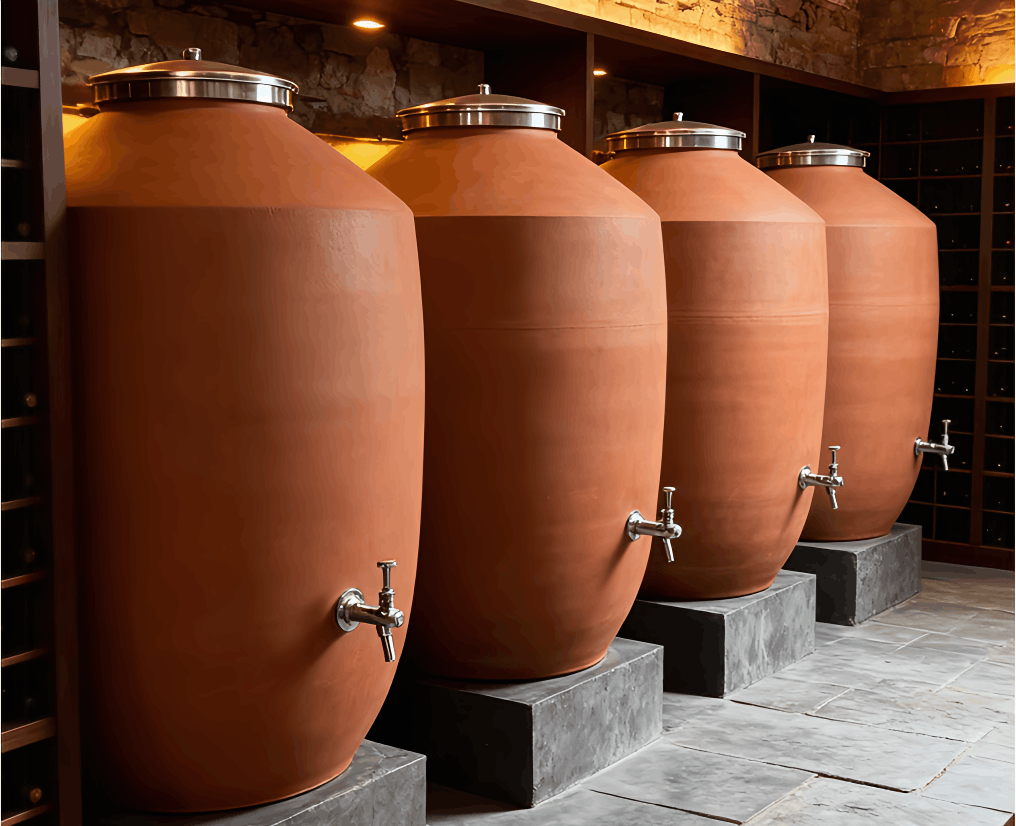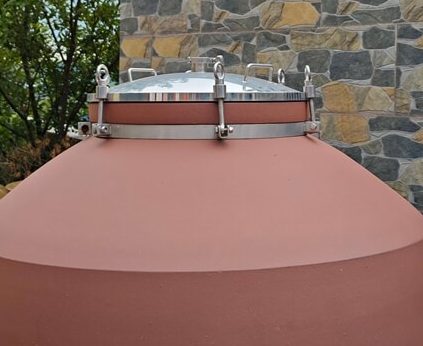The Modern Amphora: How an Ancient Vessel is Transforming Wine
In an industry often focused on technological innovation, one of the most significant revolutions in modern winemaking comes from rediscovering an ancient artifact. The amphora, a clay vessel with over 8,000 years of history, is experiencing a remarkable renaissance in contemporary cellars worldwide. But what winemakers are embracing today isn’t simply a replica of ancient pottery—it’s the modern amphora, an engineered vessel that combines ancient wisdom with modern precision to create wines of extraordinary depth and authenticity.
This isn’t just a romantic homage to tradition—it’s an intentional choice by leading winemakers striving to create more expressive, terroir-driven wines. The modern amphora revolution represents a fundamental shift toward minimal intervention winemaking—a philosophy where the vessel acts as a living, breathing partner in the winemaking process, not merely a passive container.
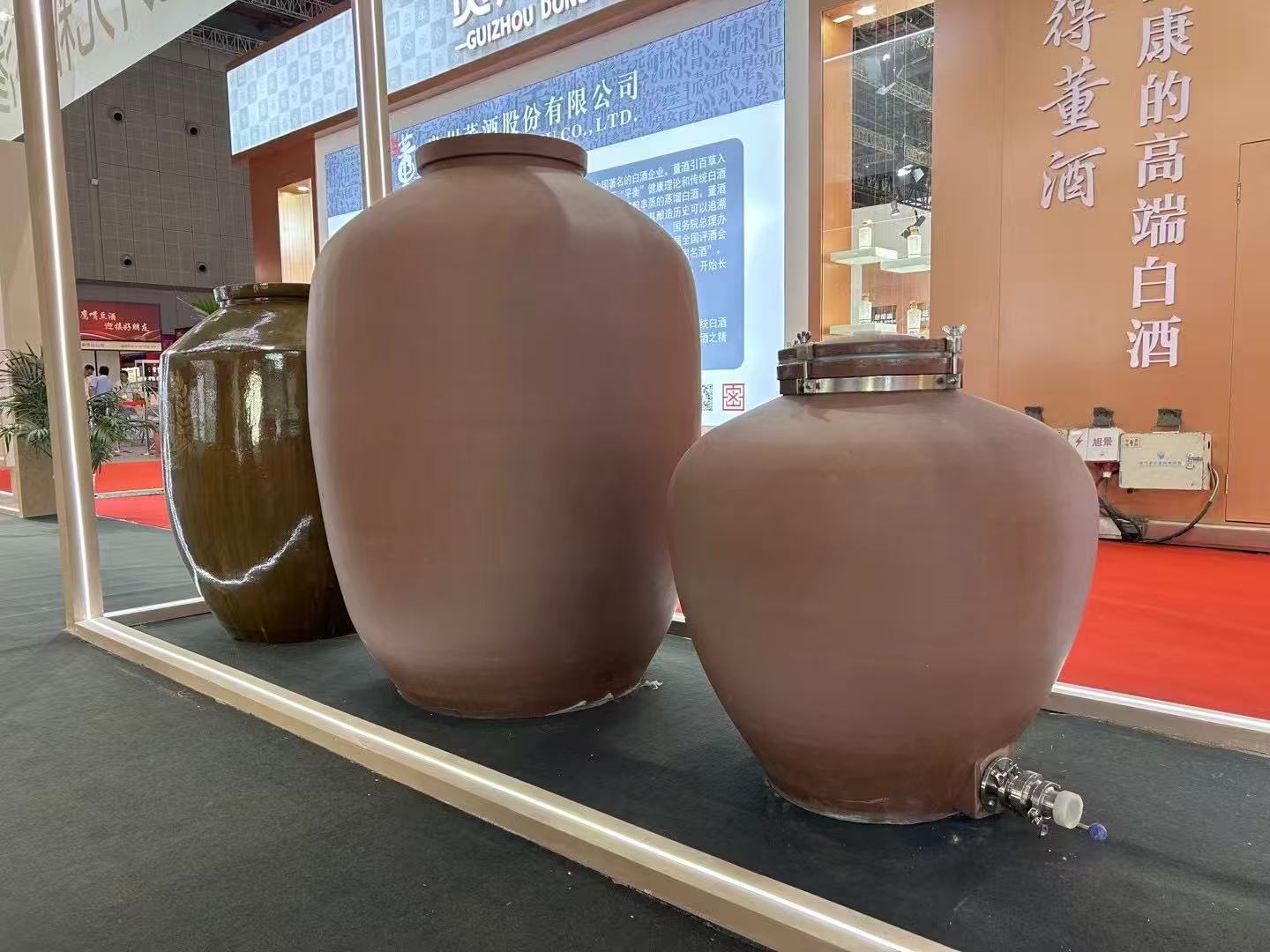
The Uniqueness of Amphora WIne Making
What makes amphora winemaking so unique lies in the fundamental properties of clay and how they interact with wine:
Micro-Oxygenation
Unlike stainless steel’s complete oxygen barrier or oak’s stronger flavor influence, the semi-porous nature of clay allows for a gentle, steady exchange of oxygen. This natural micro-oxygenation helps soften tannins and develop complex aromatics without the need for mechanical intervention.
Thermal Stability
clay’s natural insulating properties maintain consistent temperatures during fermentation and aging, protecting delicate aromas and reducing the risk of thermal shock that can stress yeast and alter fermentation.
Mineral Exchange
While scientifically debated, many winemakers believe that the mineral composition of specific clay types can contribute to a wine’s textural complexity, creating what some describe as a “stony” or “wet stone” minerality.
Modern Amphora vs. Ancient Tradition: What’s Changed?
Today’s amphora for wine represents significant improvements over ancient versions:
● Precision Engineering: Modern amphorae feature consistent wall thickness and specialized clay mixtures engineered for specific oxygen transfer rates
● Enhanced Hygiene: Many contemporary designs incorporate smooth, glazed interiors or specialized coatings that maintain clay’s breathability while improving cleanability
● Standardized Sizing: Unlike the irregular sizes of ancient vessels, modern production allows for standardized capacities that fit commercial winery operations
● Global Adaptation: While traditional amphorae were limited to local clays, modern versions incorporate materials from specific deposits worldwide, each offering unique properties.
Practical Applications in Contemporary Winemaking
The versatility of modern amphora winemaking extends across multiple wine styles:
Skin-Contact White Wines
Amphorae have become the vessel of choice for orange wines, allowing extended maceration while maintaining freshness and preventing oxidation
Elegant Red Wines
For varieties like Pinot Noir, Grenache, or Nebbiolo, amphorae help develop silky textures while preserving delicate fruit characteristics
Experimental Blends
Many innovative winemakers use amphorae for portions of their blends, adding textural complexity to the final wine
FAQs: Navigating the Amphora Transition
Q: What’s the actual cost comparison between amphorae and oak barrels?
A: While a quality modern amphora costs more initially than a standard barrique, its decades-long lifespan makes it more economical over time. A typical 100-liter amphora costs $1,500-$3,000 but lasts 20+ years, while oak barrels need replacement every 3-5 years at $1,200-$1,500 each.
Q: How do cleaning requirements differ from stainless steel tanks?
A: Amphorae require more labor-intensive cleaning using hot water, steam, and manual brushing. Chemical sterilization isn’t an option, so physical cleaning and proper drying between uses are essential. Many winemakers establish dedicated cleaning stations specifically for their amphora program.
Q: Can amphorae be used in combination with other vessels?
A: Absolutely. Many winemakers use amphorae as part of a mixed-vessel program, aging certain lots in clay while others mature in oak or stainless steel. This approach allows for greater blending complexity and lets the winemaker choose the perfect vessel for each lot’s characteristics.
Q: How long does it take to see results from switching to amphora?
A: Most winemakers notice textural differences in the first vintage, though mastering the technique typically takes 3-5 vintages. The learning curve involves understanding how different varieties respond to clay aging and adjusting winemaking protocols accordingly.
Implementation Guide: Getting Started with Amphora Winemaking
For wineries considering the transition:
1. Start Small: Begin with 2-3 amphorae to experiment with different varieties and techniques
2. Document Everything: Keep detailed notes on fermentation times, temperature patterns, and sensory evolution
3.Train Your Team: Ensure cellar staff understands the specific handling requirements of clay vessels
4.Connect with Community: Learn from other amphora winemakers through workshops and industry groups
The Future of Clay in Winemaking
The modern amphora movement shows no signs of slowing. As research continues to validate what ancient winemakers knew instinctively, we’re seeing:
● Hybrid vessels combining clay with other materials
● Region-specific amphora programs celebrating local terroir
● Increased consumer education about clay-aged wines
● New designs addressing practical concerns like moving and cleaning
For winemakers willing to embrace this ancient-but-new approach, amphorae offer a path to creating wines that stand apart in an increasingly homogeneous market—wines with soul, texture, and a genuine story to tell.


